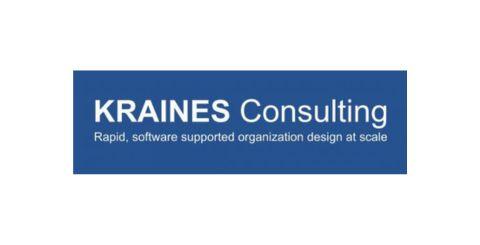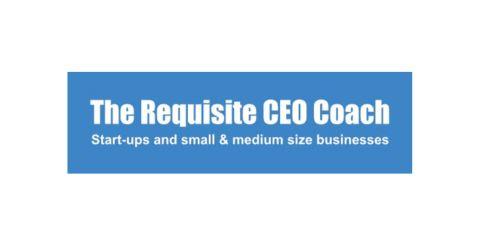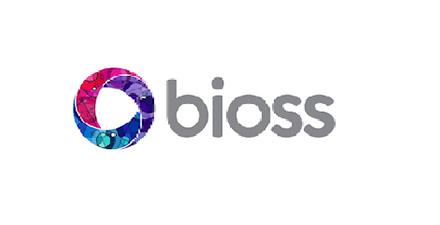
Personal Reflections: RO Intervention at Mallinckrodt Baker
A plenary presentation by Ron Harding at the 2007 GO Society World Conference in Toronto
- We're beginning to implement what I will describe as the requisite leadership behaviors that are needed to be successful in Ro. We were driving reform within the Mallancrop Baker organization and we are continuing to roll that out. We are now in a position to look at systems and install systems.
Speaker A Personal reflections on Ro experience. I don't know whether that means I should cheer or cry, but just to confine most of my remarks to the current situation that I find myself in. But leadi...
Transcript of the presentation video
NOTE: This transcript of the video was created by AI to enable Google's crawlers to search the video content. It may be expected to be only 96% accurate.
Speaker A Personal reflections on Ro experience. I don't know whether that means I should cheer or cry, but just to confine most of my remarks to the current situation that I find myself in. But leading up to that, several years ago, a friend and consultant, Dr. Meltredder, as many of you know from People Fit, introduced me to Dr. Jax's work on levels. It took me a year to get over the first introduction and I didn't return to it. But I was assigned a major reorganization type project at a major facility. And I called on Dr. Meltreder again and we had many discussions and thoughts concerning levels of work, and I used that to reorganize the management team of that organization. And then we went on into some work in terms of talent pool assessments in order to really help the next level to fill out their organizational capabilities. I went on to another organization and we did similar work and reformed the strategy from manufacturing type strategy to actually developing manufacturing capabilities and systems for medical device companies. And then finally I had the privilege of coming to an organization that had had flat growth for seven years. No growth. I like taking on organizations where it's impossible to fail. The only way to go is up. And so I took on the role in Malincrop Baker, which my manager within Tyco Healthcare basically said, either grow it or decide how to spin it off. We had some exciting times in the beginning, and once again I started where I had left off in other organizations with looking at the talent at the leadership team level, I knew I wanted to change strategies and move away from what was not working in terms of growth. And as we evaluated the level, I was pleased to see that there was basically uncovered talent within the leadership team. And so we moved some folks around to break the resistance to change, but we put them in the ones that had higher capability in the transformational roles, and then that allowed us to begin to affect change within the organization. We did some talent pool assessment and continued to move toward a different strategy. And I began to attempt to, let's say, educate some of my leadership team members in levels levels theory and with the intent of eventually implementing as much Ro as I could within a conglomerate that doesn't want Ro and really had major dysfunctional type structures existing and were impacting me in those dysfunctions. One example of what took place and Marcy is here. Marcy took on a new assignment as quality director, our global quality director. And she was literally working twelve to 14 hours a day and basically expressed a concern about she's working 14 hours a day and not making very much progress in implementing some global systems that we badly needed within the organization. And I had her speak to Glenn because I don't feel like an expert in the field and she had engineers reporting to her. And if you think of her role as a level four role, she had level two engineers and she was assigning them tasks to implement global systems. There's many things wrong with that approach. And as she talked to Glenn, she immediately recognized those issues and reorganized to where her quality managers, she folded those engineers underneath her quality managers. And within two months she was coming to me and saying in 8 hours she had extra time. And it's a remarkable turnaround of that. And the implementation has been marvelous across the organization. So that's just one example of some of my folks taking to this. And as I saw that, I recognized that we could go to the next step and begin to look at a stronger implementation of Ro principles. And since Marcy had plenty of time to do other things, we made her the project manager of the full Ro implementation. And so she's here today in celebration of that assignment. Glenn passed this on to people fit in Australia. And Glenn and Barry and Sheila Dean have vast experience in experiencing ro from the CRA perspective. And quite frankly, we've learned some things together. So let me sort of describe the implementation now that we're in at present, where we're beginning to implement what I will describe as the requisite leadership behaviors that are needed to be successful in Ro. We started this process of implementation with a leadership scan. It basically is a scan that attempts to quantify managerial effectiveness and execution risk. And I might point out that our leadership team effectiveness, the managerial effectiveness at the time was about, I think it was 43%. And our risk, I don't recall, maybe 33%. So what that means is that we were about 43% effective in the behaviors needed in order to be effective as managers. And that if we wanted to implement something globally as a team, there was a 33% risk that we would fail. And in some cases I thought that's not bad for a start. So we used that as the beginning piece and gave us big insights. Not only that, recognized that this scan was done on me individually. So Barry and Sheila interviewed my direct report and asked them did they understand what tasks that they needed to do and what their role was? And the issue was, am I setting context on their roles? And they were looking for objective evidence that that was happening. And so we had individual feedback. I originally thought that my leadership team would rebel. They would say this is garbage. I'm a good manager. I'm not 40 something percent effective. I'm more effective than that. But basically their response was we have to do this. Our survival depends upon it. And so we set about an induction process. Now, I'm careful not to use the word training because that's not what we do. We do an induction. So I went away with my leadership group and with Barry and Sheila's help, basically explained what Ro was, what the various principles were. And we had already established a leadership framework for our business, 14 principles of leadership. And we basically went through those principles and trained or inducted one by one. An induction involves discussing the principle, finding examples within Malancrop Baker of where we were or were not doing it, and then taking that away and demonstrating the principle. And only after that had been demonstrated for our rule of thumb was about three months would we allow a manager then to induct that manager's direct reports. And so we used the process of induction workout and then leading an induction as the process that we used, I think Barry likes to call the process reform. We were driving reform within the Mallancrop Baker organization and we are continuing to roll that out. Our preference would be that every manager leads reform with their direct reports. Now, because I have some direct reports that are international and across oceans, we found it difficult to work out the logistics of it all. But we've really tried to stay as best we could along those principles. And then as we've done this, we've applied the current processes, such as our strategic planning processes within Malancrop Baker. We've tried to make them requisite processes, bringing those in alignment. And let me just give you the example of our strategic planning process. We call our strategic planning process, which is really designed for execution. What's funny about this is when we started this, our organization said we never finish anything, we've never done what we said we would do. And so we started a process called strategic deployment, which is really about developing what we want to do and then asking the organization in a cascading fashion, how do we do this, and getting feedback sometimes on what we want to do that we can't do it, or refining it, and continuing with developing strategies and tactics. The mistake we made early on was we sort of took strategies that we were developing at say, level four of the organization and trying to drive level four strategies for level threes and twos to do instead of translating them into level three tactics and then eventually into level two objectives. We've learned since then that we need to make our processes that we use requisite and we translate as we move through our organization. And we assign tasks using Cpqrts this year to assign each of our strategies to our direct reports and then allowing them to break those into tasks and assign those tasks to their direct reports so that we eventually have personal assignments throughout our organization. We're busy in driving those types of concepts, evaluating our structure and using performance management, requisite performance management to evaluate where we are not capable and what the issues are, and beginning to fix our processes. We are now in a position to begin to look at systems and install systems I do have a little bit of a problem in that as a part of a large conglomerate, I have some limitations as to what I can fix. It's interesting that the HR type functions, for example, within the conglomerate, would not understand how I would change the compensation systems within the company. But for now, we're excited about what has taken place. We're still trying to drive requisite behaviors, and we will work on the systems until something gives with the conglomerate. I just might mention that that company, that organization that we're a part of, which had seven years of zero growth, has now will, at the end of this year, experience its fifth consecutive year of double digit growth and is the top growing division this year within Tyco Healthcare, which is now called Covidian.

Major organizations and consulting firms that provide Requisite Organization-based services




